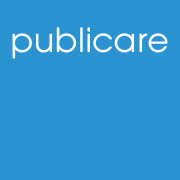
A goodbye at the store, a hello in your inbox
Many employees spend much of their working day talking to customers and prospects – in shops and call centres, on sales visits, at trade fairs, and at many other touch points. But in two areas, there’s often room for improvement:
- Direct, personal dialog between a supplier and a consumer – in a shop or on the phone – ends abruptly when the latter leaves or hangs up. Systematic communications cease unless and until the customer takes the initiative and contacts the company again.
- Dialog at customer touch points generates relevant information that is often not captured at all, or at best merely noted down in a haphazard, unstructured way. This is despite the fact that employees almost always gain useful knowledge about a particular customer or prospective buyer from these conversations. And once consolidated and suitably analysed, the sum of knowledge distilled from all those individual encounters is extremely valuable when it comes to taking strategic business decisions.
In principle, the gap between “offline” and online dialog can be bridged by very simple means: web forms. When they are used this way, the fact that web forms are often a roadblock to communications in the lead nurturing process is irrelevant. Confronting online users with a form will often cause them to abort the interaction. But in the hands of staff at the point of sale, at a trade fair stand or in a call centre, web forms can be powerful catalysts of communication. With their help, valuable business intelligence and customer data can be captured in a structured form, consolidated, and shared with other business processes. At the same time, they ensure a seamless flow of communications across various media channels. How they do that, and what benefits this brings, is explained below.
Use case 1: at a trade fair
A sales employee conducts discussions with customers and prospects and, using a tablet device, can enter all relevant details in a web form that replaces the former paper lead capture form. A follow-up conversation can then be started via email.
Benefits: form-based online solutions can be used any time, anywhere, with a variety of devices. And employees can send professional-quality emails from mobile devices in a matter of clicks. Wherever they happen to be.
Targeted, measurable follow-up
Dialog at customer touch points often ends with the goodbyes. But if you’re serious about cross-channel communications, you need to follow up this encounter with your product, brand or company the very next time the customer reads his or her email. You can use this vehicle for immediate follow-up when a prospect has ended the conversation without deciding to buy – perhaps wanting to read up on competing products online first. Continuing the conversation through a timely personalised email can promote a sale.
With the help of a web form, a sales assistant in a shop can easily send the prospect a personalised email immediately after the conversation. This offers a host of advantages:
- Personalise and save time, too: staff in a shop or call centre or at a trade fair stand seldom have time to create a personalised email from scratch immediately after talking to a prospect: the next caller or visitor is already waiting to be served. But this problem can be overcome by a solution that combines web forms with an email platform. Using a form allows predefined components – text, graphics, text entry fields, signatures, etc. – to be selected for inclusion in an email. Some sections should be editable to incorporate non-standard information that cannot be predefined. With these tools, a highly personalised email that’s exactly tailored to the recipient’s needs and interests can be produced in seconds, with almost point-and-click simplicity.
- Corporate identity/corporate design/branding: a professional email marketing platform lets users create messages that are fully compliant with corporate identity and design specifications. Appropriately worded boilerplate text can be provided. Depending on the business context, the user can send a plain text message with little or no graphic content, or a visually appealing HTML email that presents products or services in the best possible light, and in accordance with the defined brand identity.
- Seamless communication across all channels: the seamless integration of online and offline channels benefits customers and businesses alike. Interactions begun at touch points can easily be continued on the web. Recording the details of customer interactions lets businesses follow up on an abandoned online purchase with a phone call, for example. Furthermore, they can launch a sustained, automated lead-nurturing program to qualify a prospect who’s right at the beginning of a lengthy decision-making process.
- Measuring and comparing outcomes: centralised storage of structured data and integrated tracking mechanisms across all channels make it easy to compare the impact of communications activities and the efficiency of individual customer touch points. Moreover, regular tests can be carried out with a view to continuously improving communications and related processes.
- Assigning sales commissions: sales staff may be resistant to the idea of storing sales-related information on “their” contacts in a centralised database and of sending follow-up messages from a central point. They may fear that a prospect could end up making a purchase via a different channel, losing them their sales commission. However, by adding tracking parameters to the email sent to the prospect, it is possible to assign a purchase in an online store to the right salesperson at the original contact point.
Use case 2: in a conventional shop
An employee is advising a potential customer in a bricks-and-mortar shop. But the conversation doesn’t end when the prospect leaves the shop. It is continued via a personalised follow-up email about the desired product. Should the prospect buy the product later via a different channel, e.g. online, the transaction can still be assigned to the shop employee thanks to user-based tracking.
Benefits: the solution ensures that prospects are not left in a communicative vacuum on leaving a shop – when they may well turn to a competitor’s product. Furthermore, competition between the company’s online store and its conventional ones is eliminated. Wherever the customer ultimately makes a purchase, the whole conversion path is tracked – and sales commissions can be assigned fairly and appropriately.
Integrated capture of structured data
Employing web forms at customer touch points is useful in another respect, too: because it means data is captured in a structured way, ideal for entry into a database. Forms are usually easy to create, modify or extend. However, before introducing a form-based solution for data capture at customer touch points, it’s important to consider some fundamental issues. The more carefully the solution is designed from the start, the greater its business benefits later, and the less effort required for ongoing infrastructure maintenance and updating. Against this background, the following three steps are essential:
- Analysis of current customer touch points and database infrastructure: what are the touch points? Is data already captured and/or stored there? If so, exactly what data is it, and how is it captured? What databases and general data processes are already in place?
- Definition of the target data process: what data do you want to collect at which customer touch points – and in what form? Which existing data processes can, should or must this new data be integrated with? What new processes need to be introduced?
- Legal considerations: what are the legal parameters for collecting and maintaining the desired data?
The findings of this analysis can be used as a starting-point to develop a best-fit solution. In some cases it may be possible and worthwhile to fully integrate the new data process into existing systems. In other cases a standalone solution makes more sense.
Use case 3: in a call centre
Every day, call centres receive hundreds of requests of many kinds – for anything from product information to services. Web forms used in this scenario allow typical inquiries to be handled quickly and efficiently. By selecting just a few fields in a web form, employees can create an email that pulls together all the information requested.
Benefits: the solution can address a broad spectrum of inquiries. Verbal interactions by phone can be supplemented on the fly with graphics sent by electronic mail. For instance, call centre agents can send prospects emails containing product images. And in addition to verbal explanations, technical hotline staff can send callers emails with fully illustrated, step-by-step instructions, or even entire user manuals or guides.
Start small, win big
To start off, you need to have an idea of what your dialogue and data collection process will look like at your customer touch points. What have your experiences been to date, and what are your challenges? We have found that it’s best to start with small-scale projects, stay flexible, and keep an open mind. At first, you might focus solely on follow-up, for instance. That way, without spending too much money, you will quickly gain insight on various issues, such as employee and customer acceptance of the solution, the resources needed, and the benefits at different customer touch points. With this information, you can carefully plan later steps, such as improving the web forms and emails, expanding the integration of data into existing systems, and extending the solution to other use cases.



